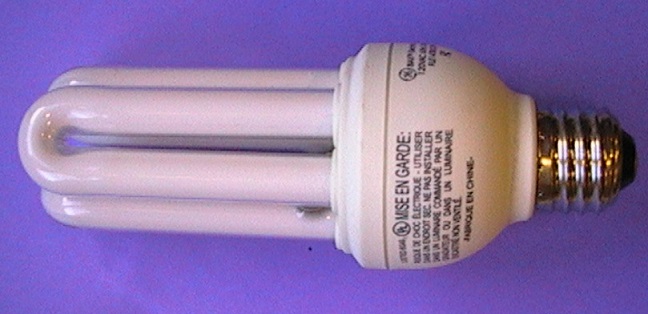by Ann Harrison
You may be surprised to discover that energy-saving lights are used more than incandescent lights, because they are supposedly cost-efficient.
Although energy efficient light bulbs may save you money in the long run, they may not be a lifesaver after all, because there are some health risks associated with having them in your home. Here are some of those health risks, and a few tips on how you can keep your family healthy.

Energy-Saving Light Bulbs Can Cause Mercury Poisoning
One energy-saving light bulb has approximately 5 milligrams of mercury in it, and if the bulbs get broken, they can release two to four tons of mercury vapor every year. If a bulb is broken, do not vacuum up the debris right away, because the vacuum cleaner can spread the mercury into the air, which can remain in your house for weeks at a time. So instead of vacuuming up the debris right away, here are some things you can do to properly clean up the bulb fragments and keep your family safe and healthy.
First of all, the EPA recommends that everyone in the home (including pets), must be evacuated from the room where the bulb was broken. Before leaving the room, be sure that your heating and air conditioning unit is turned off and that all windows are opened. Use stiff cardboard and sticky tape to pick up all bulb fragments, and place them in either a glass jar with a metal lid, or a plastic zip lock bag.
Once the fragments of glass and debris have been properly cleared away, either dispose of them in an outdoor garbage can, or take them to a recycling center.
After you have taken these steps to rid your home of the broken bulb, then and only then, is it safe for you to vacuum your carpets and bring your family and pets back into the once contaminated room.
Other Health Problems Associated with Energy-Saving Light Bulbs
There are other, not-so-obvious dangers that energy-saving light bulbs can cause to your health. One such problem is the amount of UV radiation emitted from the light bulbs themselves. You should move no closer to within a foot of the bulbs for up to one hour per day, as close contact with the UV radiation can cause permanent skin damage, and cataracts to form on your eyes. Although the UV light is not as strong as that of direct sunlight, too much exposure can cause skin cancer, according to a research study conducted by Stoney Brook University. This is especially true if the protective phosphor coating, which the bulb has to have a milky white color, when turned on, emits more UV light, when cracked, causing a person to develop skin cancer, when exposed for long periods of time.
The energy-saving bulbs can also cause a person to become violently ill. The harsh UV light from these bulbs are associated with side effects such as headaches, dizziness, lack of concentration, and anxiety, among others, therefor the less exposure you have to such lights, the more likely you are to prevent these symptoms.
One final hazard that GE energy-saving light bulbs is known for, is the fact that they are a fire hazard, especially when left on at night. However, fires can start in the plastic materials found in the base of the bulb, which is not designed to be housed in a tight ceiling fixture. If you choose to use these lights, you must find the proper lights for ceiling fixtures, versus lamp bulbs. When choosing light bulbs for your home, it’s important to ask yourself whether the extra cost of energy saving light bulbs, which lower the cost of your energy bills, is worth the cost to your family’s health.
About the Author
Ann Harrison is a totally blind author, who grew up in the small town of Rochelle, Georgia, and has moved back to her family home after living in North Georgia for several years. Ann has written many articles of general interest for a number of clients since June of 2010, including the Cordele Dispatch. She has also published a short story entitled “The Big Climb” in Awethology Light. Ann also published a story entitled “The Woods” in December Awethology Light Volume by The #Awethors. She is currently working on several novels, and a self-help book. To read more of Ms. Harrison’s inspirational writings, visit her blog at www.wwannwrites.wordpress.com.


